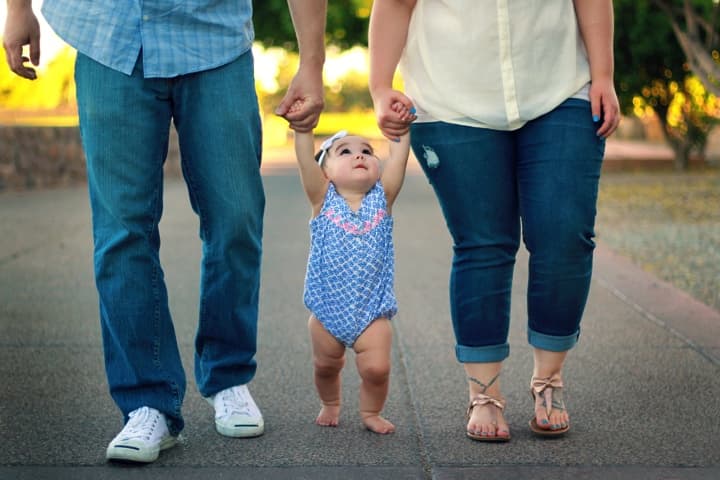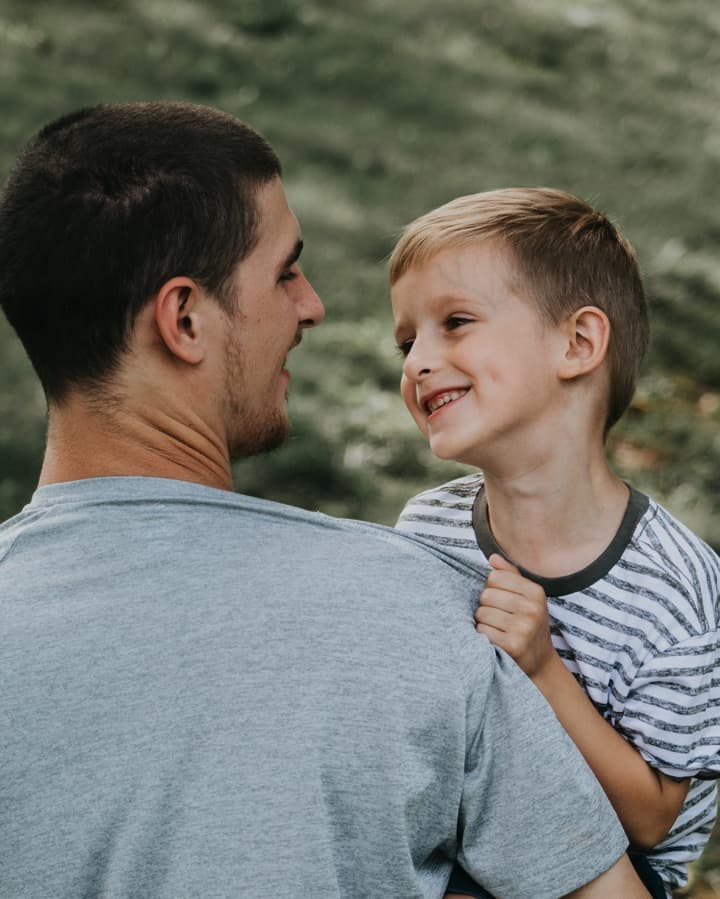The term ‘dyadic relationship’ is being discussed more frequently in early childhood education (ECE) circles, as society’s understanding of the importance of primary relationships in an infant’s life grows.
The dyadic relationship (referring to a dyad, a relationship between two people) has been seen throughout human history through the mother-infant relationship. However, with mothers, parents and caregivers now leaving their child to return to work at earlier stages of the child’s development than ever before, modern society has adapted a new approach to caregiving with a surge in early childhood education (ECE) providers.

The definition of “dyadic relationship” is therefore evolving to include the addition of teachers and educators, who form strong bonds with infants and children in ECE settings. Furthermore, the development of “primary caregiving” within these settings has become an increasingly prominent feature of the ECE environment.
This implementation within the New Zealand ECE setting has a wide array of positive and negative implications. In a system struggling with funding and an already overworked task force, the question we might ask is whether primary caregiving is indeed possible, and if so, under what conditions?
What is a dyadic relationship?
The term dyadic relationship stems from the Greek word “δύο dýo” and the sociological term “dyad,” referring to a group of two people. A dyadic relationship is therefore the adjective of this term, and refers to the interactions between the two people.
Dyadic relationships form from infancy, between the infant and their primary caregiver. This is often the mother, but recent research in early childhood development puts an emphasis on the importance of the dyadic relationship rather than the maternal (or paternal).
Throughout human history, the dyadic relationship was a necessity of survival for young infants. The mother was the sole provider of food, warmth and often shelter. As a result, humans have evolved to rely heavily on another within the first few years of life, known as the mother-infant dyad.
As societal needs for caregiving have changed, with caregivers returning to work earlier in their child’s life, the historic dyadic relationship is slowly beginning to change. Children attend ECE services at younger ages (with some centres licensed to take children from birth to 3 months old) and for longer periods of time (with some licensed centre hours ranging from 6.30 a.m to 6.30 p.m).

Often referred to as “primary caregiving” within the ECE setting, early childhood professionals have adapted to this societal change. Dyadic relationship theories have been added to many educators’ repertoires, as teachers discuss how to best establish this theory in the often chaotic and busy setting of an early childhood centre.
How are dyadic relationships implemented in ECE?
The adaptation of the dyadic relationship in ECE has begun to be a prominent pedagogy practised and discussed widely throughout New Zealand centres, as more research and information is discovered by prominent early childhood practitioners.
Often this is implemented through “primary caregiving.” This term can be seen on a number of early childhood centre websites in relation to their philosophy and practice; as a whole it is a widely discussed and utilised term. However, the question of whether it is implemented and understood is a separate discussion. From prominent providers to smaller centres, “Primary Caregiving System” or “Key Educator System” all mean the same action; that a teacher is assigned to a child and takes personal responsibility for the child’s well-being out of the group of children present.
With the absence of the child’s initial primary caregiver (for example their mother or father), the need for the ECE educator to step into this role has become a necessity. Without taking full primary caregiver status, the educator adapts this role only within the education setting.
The role of the primary caregiver consists of many aspects, including meeting and greeting the child and parent every morning, caregiving routines and care moments for the child (sleeping, feeding and toileting), main contact for parents, and planning and programming for the child’s developmental needs.
What are the benefits of dyadic relationships in ECE?
With the rise in popularity of primary caregiving in ECE centres, the benefits of this practice are widely advertised. Indeed there are many, with strong neurological and educational research to support this.
Nathan Wallis (NZ Neuroscience Educator) discusses these benefits widely throughout his practice. Wallis states that statistically, the eldest child in a family grows up to earn the most money and become the most qualified. The strong dyadic relationship an only child (or eldest) naturally receives being the sole child in a family develops as they generally spend more time with their significant primary caregiver.
Social skills with peers develop only after a strong one-on-one relationship and attachment has formed. Though the bond with the mother (usually) is strong within an infant, the child’s biological programme demands they attach to the most responsive person available. At home this is usually the mother, and in an ECE setting this would be the primary caregiver. Without primary care functions in a centre that are readily available to provide for the child, the child’s developmental needs are simply not being met.

The common saying “it takes a village to raise a child” should relate to the village, or community, wrapping around the mother and child, or dyadic relationship, and providing the means for this to happen. In Aotearoa New Zealand, the adoption of te ao Māori (the Māori way) child rearing practices within ECE supports the dyadic relationship in a way that is unique to both the sociological culture and Te Whāriki (New Zealand Early Childhood Curriculum). As discussed on Te Whāriki, the impact of relationship (ngā honga) in a child’s life is tremendous; a child’s learning occurs through responsive and reciprocal relationships with people. A child’s sense of belonging (mana whenua) and wellbeing (mana atua) is supported when their emotional wellbeing is nurtured and they know that they “have a place” in the ECE setting.
By incorporating dyadic relationship practices to the teaching environment, ECE teachers are taking the concepts of Te Whāriki to a literal application in practice. This is even suggested by the curriculum, particularly for the care of infants where best practice is described:
“…a familiar and unhurried kaiako has primary responsibility for each infant so that they can anticipate who will welcome and care for them. The timing and pace of caregiving practices is guided by the infant.”
What does this mean in practise?
As previously discussed, developments in modern society mean that many parents and mothers are choosing to utilise centres in order to return to work. In order to support the need for a dyadic relationship, home-based ECE services and primary care within centres is the only way ECE services can provide this support for children and their families.
Previously many centres have worked under a more “industrial” roster; with one teacher on toileting, one on feeding, one on outside duty, one on sleeping. The child is passed to and fro, handed to whomever is responsible for the designated task. This type of practice in centres in clinical and far behind the current educational research for what is commonly known as “best practice.” There is no fostering of the dyad, and the constant act of being in transition can be extremely stressful for the child.
Primary caregiving is not only the best practice within centres, it also acts as a solution to the modern era of parents required to return to work early. The “village” now supports the mother-infant dyad.
Primary caregiving offers children the chance to develop a close, and even loving bond with a responsive educator. The educator works with the child’s rhythm, providing support throughout the routines of the day. A key indication of a successful primary caregiving structure within a centre is high adult:child ratios. With the Ministry of Education’s (MoE) recommendation of a ratio of 1:5 for infants, this allows no room for primary care. At the very least, a ratio of 1:3 would be required.
Centres also need to have good relationships between the teachers, management and governance. Communication is key: without strong communication between team members, primary care would not be able to function effectively within the current MoE guidelines. Centres need to work on retaining teachers, allowing closer relationships to form between colleagues and creating an overall supportive environment for teachers to grow their practice.

It’s also imperative that centres dedicated to primary caregiving reflect this in the environment and overarching centre philosophy. The environment should be consistent with the practice, with a homelike and nurturing appearance. Teachers should be able to move throughout the space freely, without being confined to one area (for example, being on “sleep-room duty” wouldn’t be cohesive with dyadic care). Theorists such as Pikler, Gerber and referencing RIE practice should be apparent in the centre philosophy. Without these key elements, primary caregiving simply won’t exist in the current ECE climate.
What are the limitations of dyadic relationships in ECE?
With the positive neurological and biological aspects of primary caregiving and dyadic relationships for children in ECE centres, there are no strong arguments against this from the child’s perspective. The only negative elements therefore lie in the possibility of implementation from teachers.
Something that is discussed widely in online forums across the NZ ECE network is the constant need for the MoE guidelines to change, in order to support the current educational research into best practise.
One such guideline is mentioned above: the ratio of adult:child. Without MoE guidelines determining best practice, there in an increased risk of rogue centres and centre owners pushing standards to below par for the sake of profit margins.
The mental and emotional toll on teachers is also high. Passionate and experienced teachers are adopting pedagogies such as primary care as part of their personal teaching philosophy. The constant requirement for teachers to attend professional development means that registered teachers are often ahead of best practice guidelines (primary caregiving) before the MoE guidelines are updated. Unfortunately, this prompts a mental toll on teachers who try their best to implement these practices without the overarching support of their employers. Teachers come across restraints constantly of funding, poorly planned environments, incorrect budgeting of funds, and lack of understanding from overseeing governance.
How can dyadic relationships in ECE be improved?
If we were to take only one commentary from the current implementation of dyadic relationships in NZ ECE services, it would be that the MoE needs to step up their guidelines in order to meet widely acknowledged best practice. The key element in this would be an increase in funding to allow for ratios of at least 1:3 for infants. Without this one crucial element, the simple formula to support dyadic relationships for NZ children simply cannot exist.
Conclusion
The history of the dyadic relationship within human evolution started simply; a mother-infant bond necessary for survival of the child. As society has evolved to the modern working families we know today, with mothers and caregivers returning to work earlier in their child’s life, the dyadic relationship has changed with this. Research now tells us it is the dyad that is necessary for child development, not necessarily the mother-infant dyad. As such, ECE teachers have stepped into the role of the responsive adult while the child is away from their mother; with many ECE provers adopting the strongly heralded best practice of primary caregiving.
Primary caregiving in early childhood settings has almost unprecedented benefits for the child in comparison to the almost clinical approach to infant-teacher relationships of the past. The very basis of the NZ ECE curriculum Te Whariki is founded on recognising the importance of adult-child relationships and nurturing the wairua (spirit) of the child in the early childhood setting. However, without proper governance, environmental and funding support from the Ministry of Education and all ECE providers, implementing primary caregiving will continue to take an emotional and mental toll on passionate teachers and educators in the ECE sector.
To read more about Primary Caregiving in practice:
https://www.myece.org.nz/caring/105-primary-caregiving
https://www.hekupu.ac.nz/article/pedagogy-passion-working-infants-early-childhood-education
To watch Nathan Wallis discuss dyadic relationships:
https://blog.storypark.com/2017/05/babys-first-1000-days-life/
To read more about Te Whariki:
https://tewhariki.tki.org.nz/en/principles-strands-goals-and-learning-outcomes/
https://tewhariki.tki.org.nz/assets/Uploads/files/Te-Whariki-Early-Childhood-Curriculum.pdf#page=24
